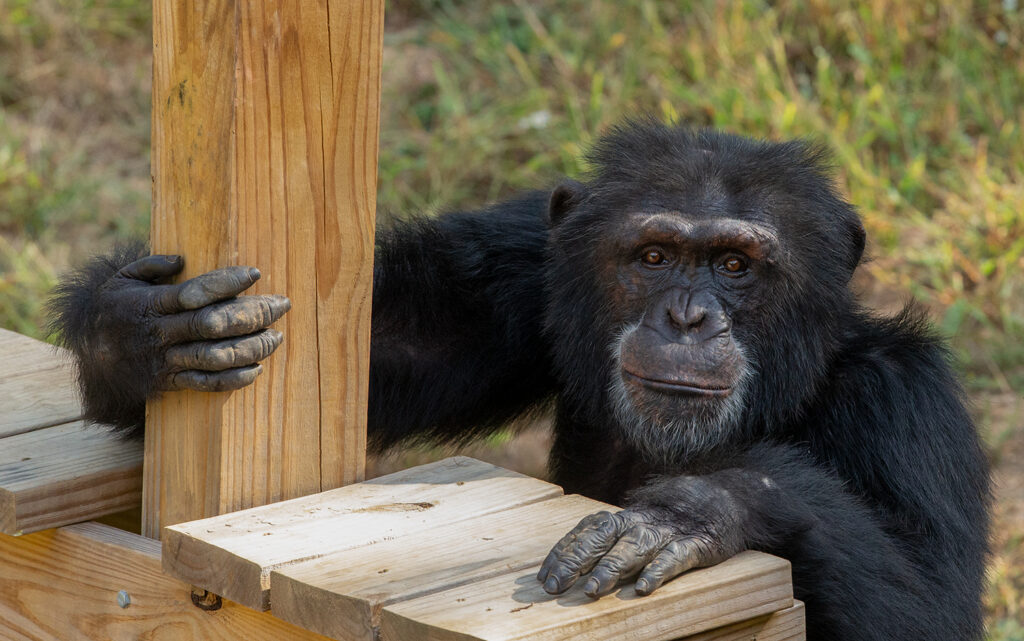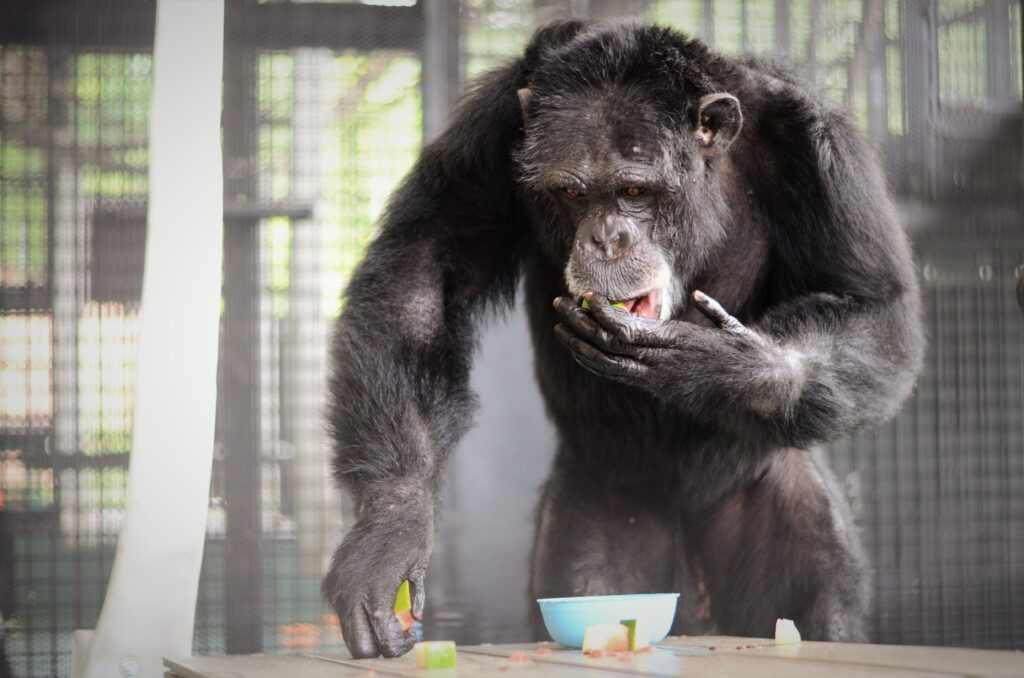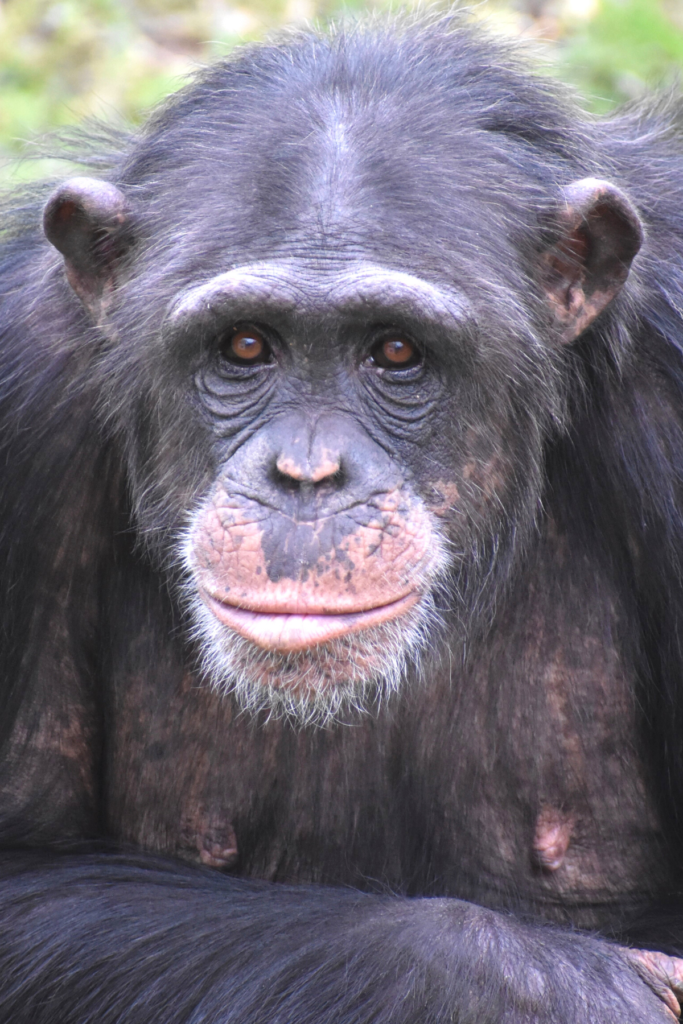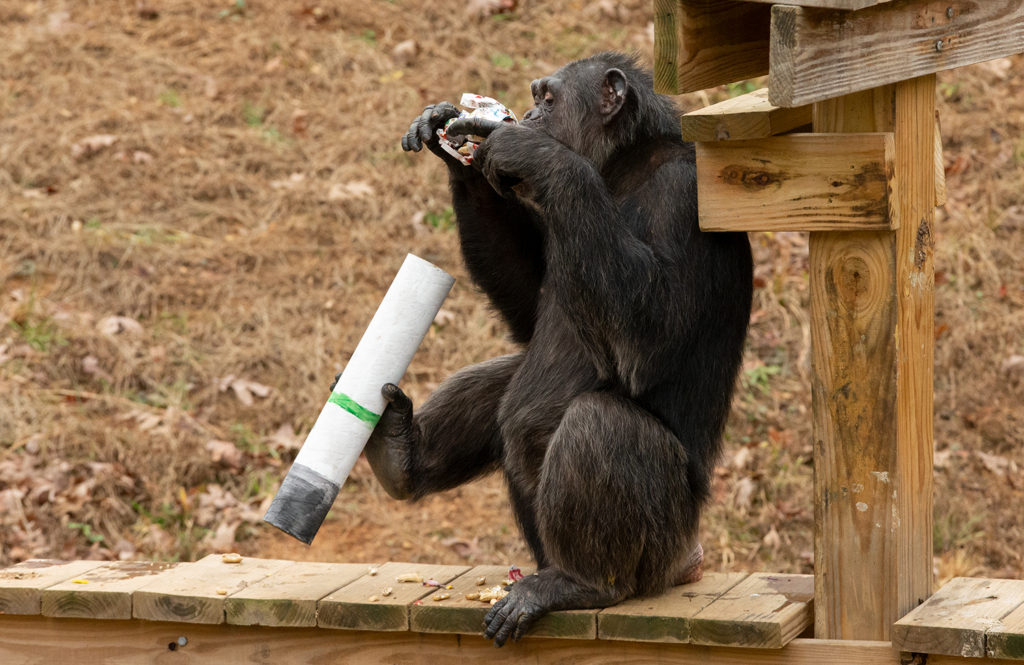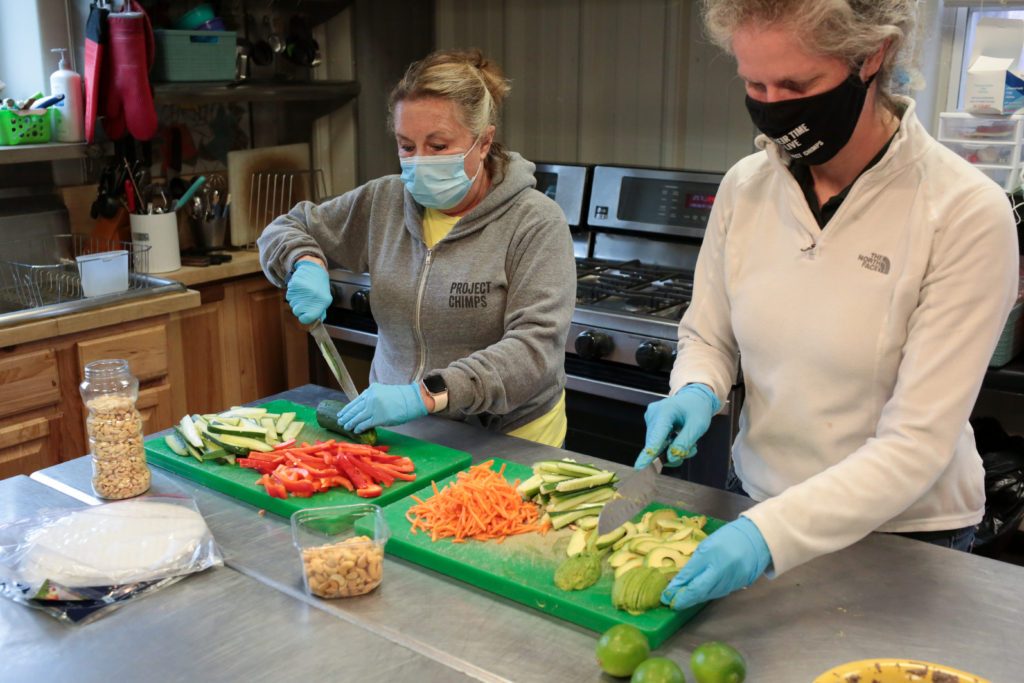Posts Tagged ‘chimp’
Bo matures into alpha of Cedar Tree
By Joseph Elliott It’s been a year and a half since separate groups of six males and nine females were put together to form Bo’s group at the Cedar Tree villa. It’s turned out to be a great learning experience both for the chimps and the caregivers alike. In theory, it makes some sense to…
Read MoreThe Perfected Hand Eating Techniques
No utensils? No problem. Chimpanzees use their hands for basically everything – including eating. They rely on their hands in the same way humans do, if not more! When it comes to eating, the chimps are always showing off their hand eating skills.
Read MoreChapped Lips: Chimps Get Them Too!
Just like humans, chimpanzees can develop chapped lips! Samira came to Project Chimps in 2016, and she brought with her chronic dry skin. The caregivers at Project Chimps used medications to soothe her dry skin. However, they wanted to provide Samira with the least invasive form of treatment.
Read MoreLeo-land
Leo has been a special chimp from the beginning, and we have been helping him cope with mental episodes. Leo has made significant improvements since he has arrived at the sanctuary and continues to thrive.
Read MoreChimps’ intelligence stands out for interns
When Victoria Washington reflects on her summer internship at Project Chimps, chimpanzee intelligence stands out the most. “They are really smart, especially when it comes to trading and using tools,” said the recent graduate of Auburn University. “I was really excited to get to see that in person. I think that was the most amazing…
Read MoreCreator of the BOT (Behavior Observational Tool) – Eric Simonton
Eric Simonton developed the BOT several years ago. It’s actually an incredibly humorous and somewhat cosmic story.
Read MoreA Chimp’s Guide to Stealing Food
Stealing food is a strategic business in the chimp world. While it may sound like a simple interaction, there are actually many reasons why chimps steal food – and no, it is not just because they are hungry. Here is a chimp’s guide to stealing food while keeping a clean slate.
Read MoreChimp Diets – What’s on the Menu at Project Chimps?
Just like humans, chimpanzees have their own unique dietary needs and preferences. For example, you will probably try in vain to get a chimp to eat foods such as kiwi, squash, kale, and green beans. But you will be very popular if you present favorites such as onions, eggplant, sweet potatoes, apples, and bananas.
Read MoreOde to the Onion – Chimps Love Onions
Chimpanzees’ eating habits are determined based off of their social rank. When observing chimpanzee foraging customs, it helps us learn more about their mannerisms.
Read MoreThe BOT Tool to Track Abnormal Behaviors
Kate’s job as Behavior Coordinator at Project Chimps is to observe and assess chimp behavior as well as run the Positive Reinforcement behavioral training program. Kate closely with the chimpanzees and caretakers to monitor the well-being of the chimps and determine whether or not there are any signs of abnormal behavior
Read More
